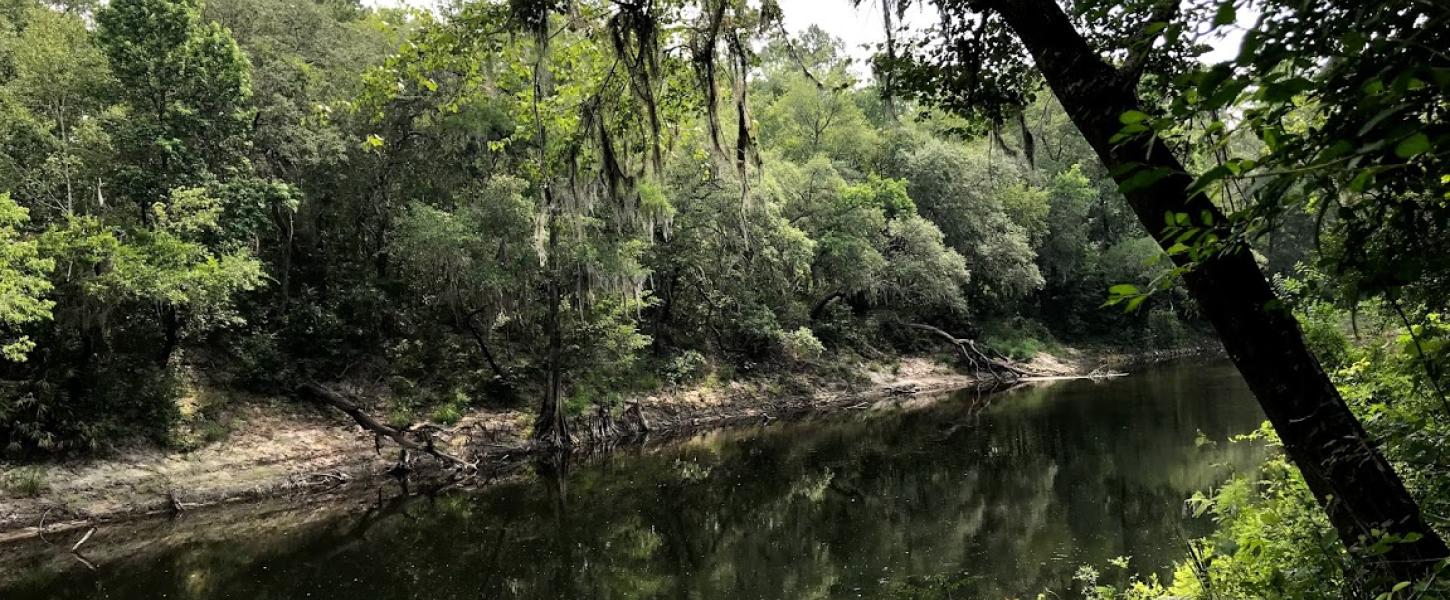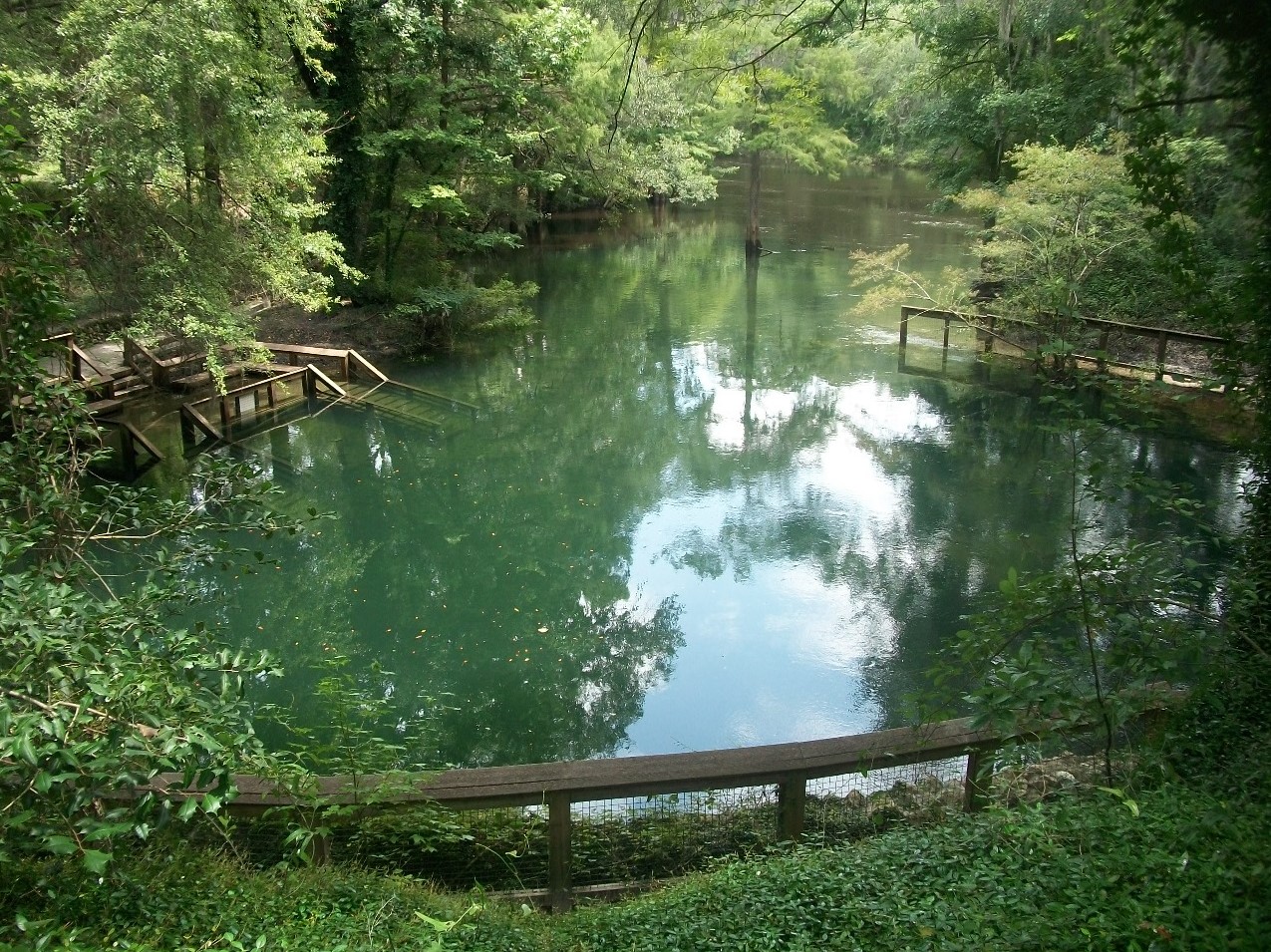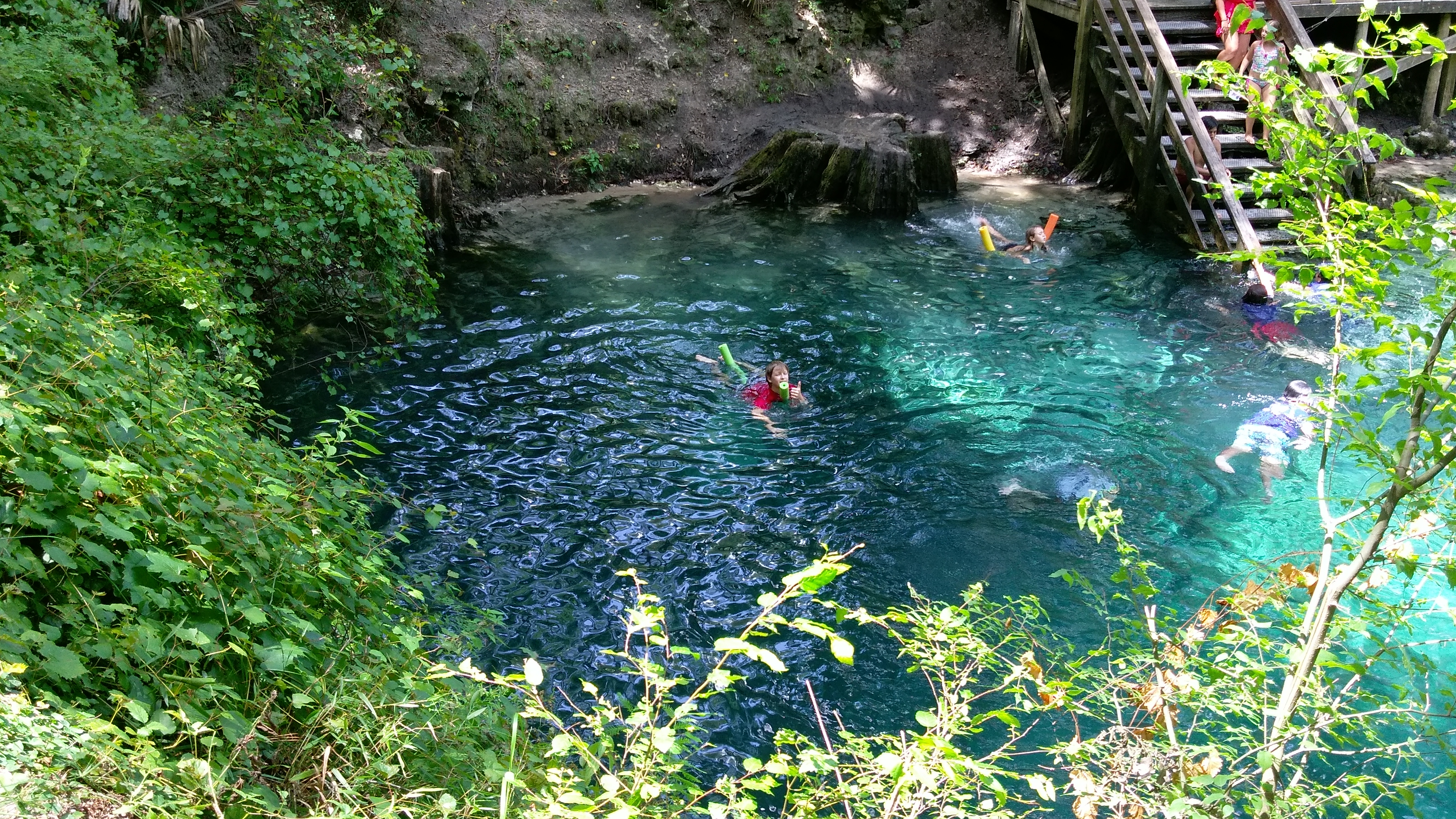
The Dynamic Withlacoochee River

Madison Blue Spring and the Withlacoochee River are the two most significant hydrologic features of the park.
Madison Blue is a first-magnitude spring located on the west side of the Withlacoochee River 12 miles upstream from its confluence with the Suwannee River.
The Withlacoochee River, whose course forms the boundary between Madison and Hamilton counties, is one of the relatively few alluvial streams in Florida, most of which occur in the Panhandle. Alluvial refers to the makeup of the river, which consists of mobile sediment and soil. These rivers are self-formed, and their shape is dependent on the magnitude and frequency of flooding that occurs.

In the upper Withlacoochee River, flow is primarily dependent on surface water inputs, while farther downstream the river is increasingly fed by groundwater. In fact, Madison Blue Spring is the major source of base flow in the lower Withlacoochee River (Giese and Franklin 1996a). When the river experiences low water levels, a greater proportion of flow is contributed by springs, and this can trigger significant changes in water chemistry and clarity.

During flood stage of the Withlacoochee, however, the opposite occurs.
As river levels rise, Madison Blue begins to act as a siphon or inflow into the Upper Floridan aquifer (Giese and Franklin 1996b; Gulley et al. 2011). This inflow, as surface water and groundwater mix, can cause substantial changes in groundwater quality, including the input of nutrients into the aquifer (Katz et al. 1999; Katz and Hornsby 1998; Berndt et al. 1998).
The marked changes in water clarity observable within the Madison Blue system are dependent on low velocity, clarity of the Withlacoochee River (tannic or clear) and height of the river.

Partial or complete brownouts of the Madison Blue system may occur. A complete brownout happens when tannic river water covers the entire spring run and head spring, and water clarity is reduced to less than 4 feet of visibility. Park staff document brownouts and water clarity at Madison Blue Spring.
Periodic monitoring of water quality in the Withlacoochee River near Madison Blue Spring State Park is an important management measure. Monitoring is accomplished by the Florida Department of Environmental Protection in cooperation with the Suwannee River Water Management District and the Madison County Health Department.
While visiting the park it is important to remember it's all connected! These dynamic systems reflect the quality of water that we use every day. Always remember to clean up trash, swim in designated areas, and remember that together we can protect ...the Real Florida.